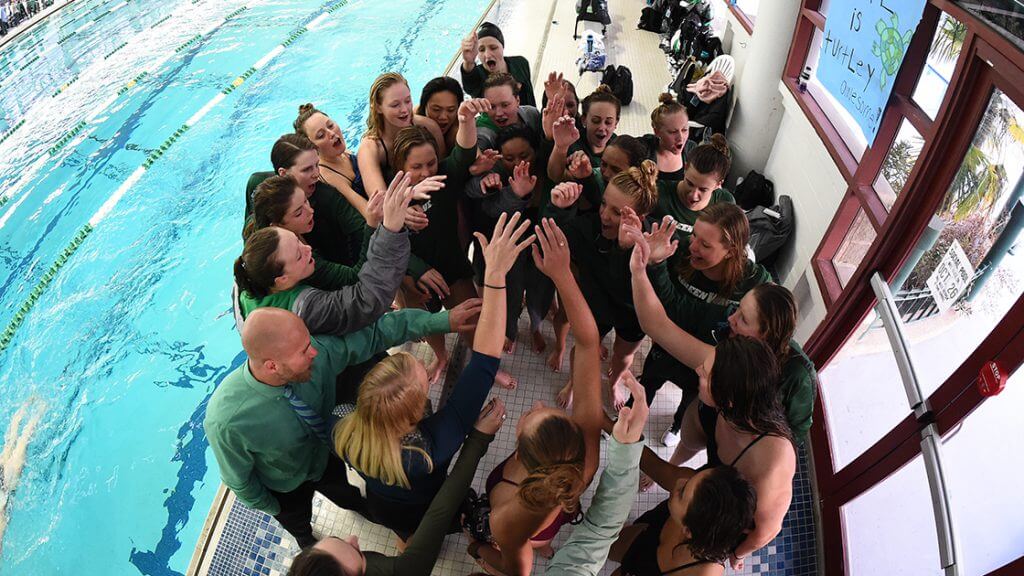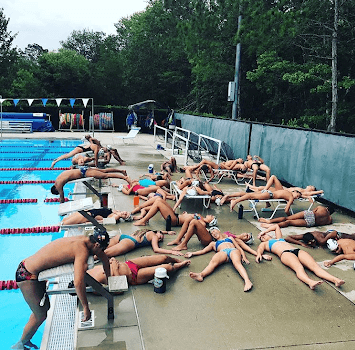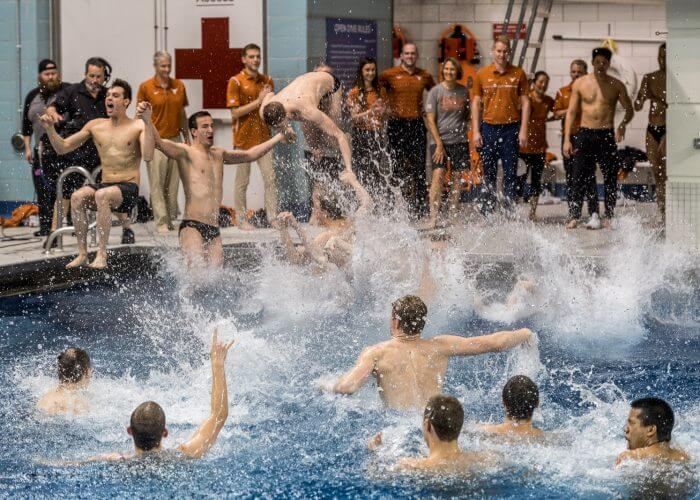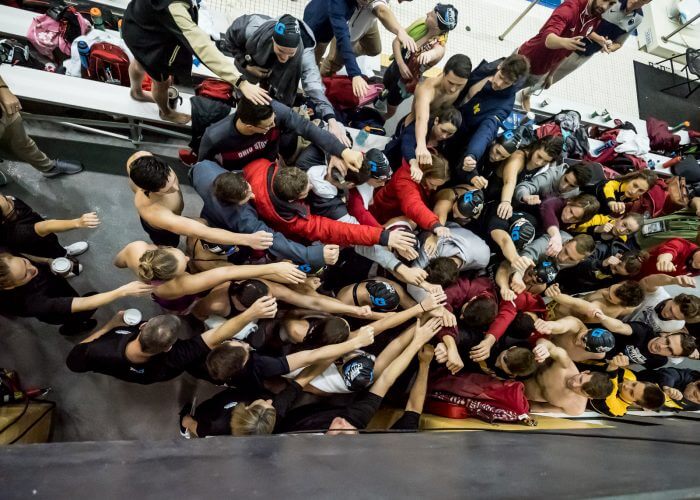3 Reasons Why Swimmers Have the Strongest Bonds

3 Reasons Why Swimmers Have the Strongest Bonds
By Ryan Gibbons
The sport of swimming goes far deeper than individual times, personal goals, and internal growth. While it is true that a great deal of the sport remains focused on the individual, it is unquestionable that much of the sport is a team activity.
Swimmers may measure aspects of their success individually, but from team awards to group training, swimming not only forms incredibly strong bonds between teammates but also depends on these bonds for great success. A combination of these factors and others create meaningful relationships between swimmers that are arguably stronger than those formed by any other – even “team” – sport.
1. The Difficulty of Training

Photo Courtesy: Charlie Rose
It’s no secret that the training process for swimming is one of the most challenging and rigorous in the athletic world. Swimmers train tens of thousands of yards and countless hours in just one week, most of which at a high intensity. Not only does this work cause physical stress but also puts intense mental pressure on the group.
This constant challenge of training creates an intense sense of camaraderie between teammates. Being subject to emotional stress as a group forces individuals to bond with each other for support and comfort, a process frequently recognized in psychology. This commonly shared struggle combined with the encouragement between teammates to push harder creates incredibly strong bonds between teammates.
2. The Achievements As a Team

Photo Courtesy: Peter H. Bick
Just as an individual can drop time, achieve a cut, or place at a meet, a team can progressively work harder to achieve common goals and growth. Teams striving for a shared goal (such as winning a conference or state meet, upsetting another team in a dual meet, or making a certain goal as a relay) can go through the process of training and goal-setting together, making both the process and the result that much more valuable.
For example, a team may set a common goal of winning the state meet. The process of training together, motivating each other, and eventually obtaining the goal by winning the meet is a very similar process to achieving an individual goal: training, motivating, and achieving. As such, the emotional effects are similar. With the individual process, strength and confidence in oneself is developed. In a team process, this confidence is placed in one another. This interdependent confidence and trustworthiness is not unique to swimming – yet, in such a tasking and competitive sport, it serves as yet another exemplifying feature of teammate bonding.
3. The Lifelong Friendships

Photo Courtesy: Peter H. Bick
In many sports, teammate bonds come and go: they may be strong during the sport or a championship-winning season but often decrease in rough patches or over time. Swimming bonds persist in their nature throughout the course of one’s career and even further into life.
A group of teammates may see each other multiple times every day for the course of over a decade. The same close group of friends who you grow up with – who are with you at your first meet, first practice, first years of the sport – are the same people who stand with you on the podium years later, achieving a goal that’s been sought after for years, or even cheering you on at a personally monumental meet. Many sports may bond for one or two seasons – swimmers bond for most of their youth, growing up with a close group of teammates, developing through their lives with these close friends around them. This long-term connection is greatly unique to swimmers and helps to create these deep friendships.
Teammate bonds also last for a lifetime. As teammates become remembered as childhood best friends, connections between ex-teammates frequently continue well into a group’s post-swimming years. The close swimming community as a whole fosters these long-lasting relationships, leading to life-long teammate bonds.
The personal connections gained through years of swimming are some of the most valuable long-term effects of a swimming career. Even after the caps and goggles are left behind, the deep friendships and bonds formed by years of training and competition (sometimes even with non-teammates who were met at various points throughout a career) persist for decades. As we conclude Thanksgiving celebrations and look forward to the holiday season, keep in mind the great teammates that we stand with and the swimmers who have grown with us for years. They will remain some of the closest friends life has to offer and will be there for us for years, just like they’ve always been – with us through the toughest sets and on the highest podiums.
All commentaries are the opinion of the author and do not necessarily reflect the views of Swimming World Magazine nor its staff.




So very true! Love this sport!
Paige Sample Walters
Parker Waters that’s your photo !
Kait Simpson Awesome!
Josh Barila
I think they might have a good point! John Newton, Jimmie Wheeler, Pamela Helms Newton,Denae Ebuna, Bart L. Graham,Debby Green Kramer
We sure have seen this bond!?
Debby Green Kramer that’s for sure!
This article is my swimming experience
Naomi Harris Kerri Thomas ?
So true!
Andrew DeChellis Anna McDonald David Rotthoff
I think it’s for the positive energy between team members.
Tayyaba H Rauf and Shaherbano Rubab I know it’s true not also for our kitchen is but us as well❤
Maliha Hashmi Absolutely!!! These are life long bonds- for both generations – in and out of the pool ?
Madeleine Amezcua Haley Dickey Ali Chorpenning Madison Taylor Bobrow
Monica Mendez we need another get together soon